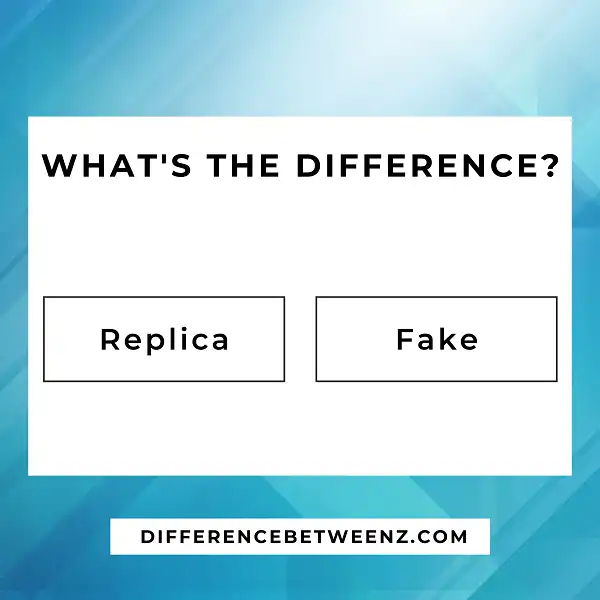There is a big difference between replicas and fake designer goods. A replica is a high-quality copy of an original, while a fake is a counterfeit item that is usually made in poor quality. Many people use the terms “replica” and “fake” interchangeably, but there is a big difference between the two. If you are looking to buy a designer piece, it’s important to know the difference so you can make sure you are getting the real thing.
What is Replica?
The replica is an exact copy or model of something, especially one on a smaller scale. Replicas are often used as reduced-size models of things too large for practical use, such as buildings, ships, and aircraft.
- Replicas can also be used for historical purposes, such as replicas of paintings or sculptures. Replicas are also often used for promotional purposes, such as corporate gifts or souvenirs. Replicas are also commonly used in the entertainment industry, particularly in the production of films and television shows. Replicas are often used to create sets or backdrops for scenes set in different locations or periods of time.
- Replicas are also used to create props and costumes for actors to wear. In some cases, replicas are even used as stand-ins for actors during filming. Replicas can also be used to recreate historical events or settings for educational purposes. For example, replicas of famous paintings or sculptures can be found in many museums. Replicas can also be used to create interactive experiences for visitors to museums or other tourist attractions. Replicas can also be used in scientific research, such as in the study of animal behavior.
- Replicas can be created using a variety of methods, including casting, carving, and sculpting. In some cases, multiple replicas may be created from a single original object. For example, a mold may be used to create multiple identical replicas from a single model. Alternatively, a replica may be created by combining two or more objects into a single object that resembles the original object. Replicas are often mass-produced using techniques such as injection molding or stamping. However, some replicas are handcrafted using traditional methods such as carving or sculpting.
What is Fake?
Fake is often used as a negative term, implying that something is not genuine or authentic. However, the word can also be used to describe something that is imitation or simulated. For example, a fake diamond is a synthetic gemstone that resembles a real diamond. Fake fur is another common example, which is often used in fashion and worn as a cruelty-free alternative to real fur. In some cases, fake can also be used in a positive way, such as when referring to a well-made replica or counterfeit item. Ultimately, the meaning of fake depends on the context in which it is used.
Difference between Replica and Fake
Replicas and fakes are both imitations, but there is an important difference between the two. Replicas are made to look exactly like the original object, while fakes are usually of lower quality and do not try to replicate the original exactly. Replicas can be made for many different reasons, including to preserve a piece of history or to showcase skill. Fakes, on the other hand, are often made for the purpose of deception. For example, a fake painting might be sold as an original, or a fake diamond might be passed off as a real one. Because replicas are not trying to deceive, they are generally not considered to be as bad as fakes. However, there is still a difference between the two, and it is important to be aware of it.
Conclusion
The replica watch industry is booming, but it can be difficult to tell a fake watch from a replica. In this blog post, we’ve outlined the key differences between replicas and fakes so that you can make an informed purchase. We hope this information was helpful and wish you luck in finding the perfect timepiece for your collection!


